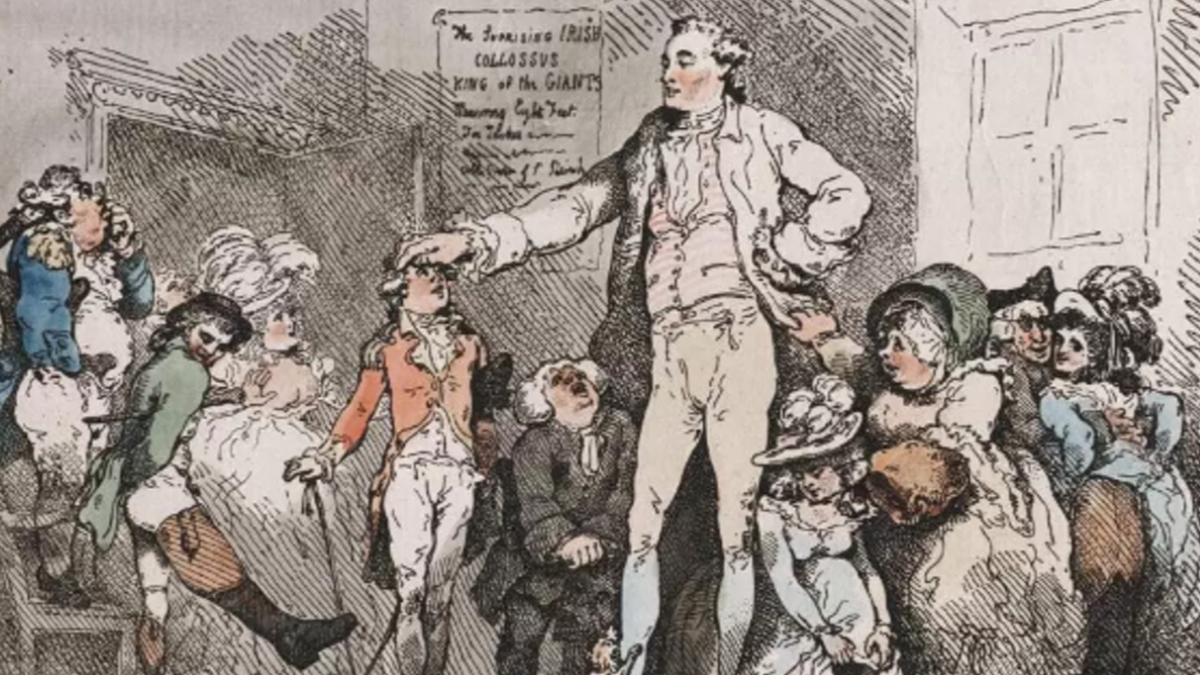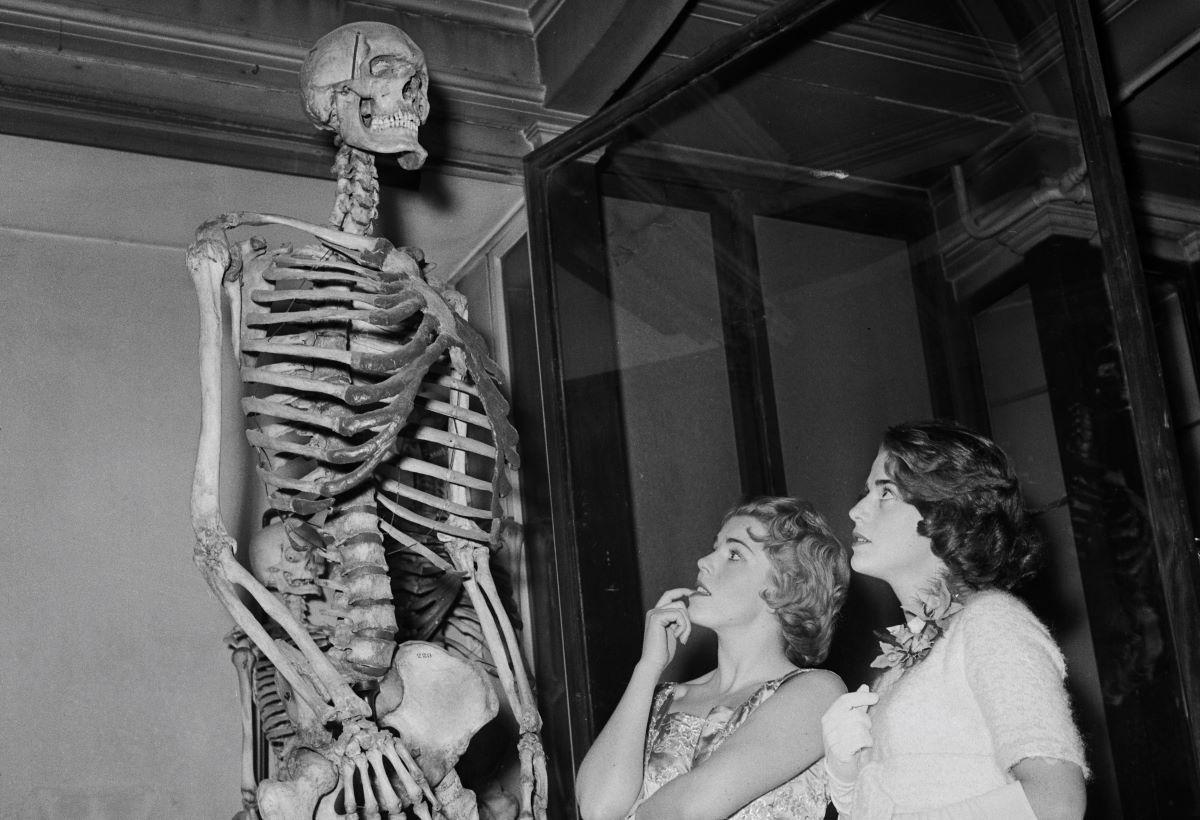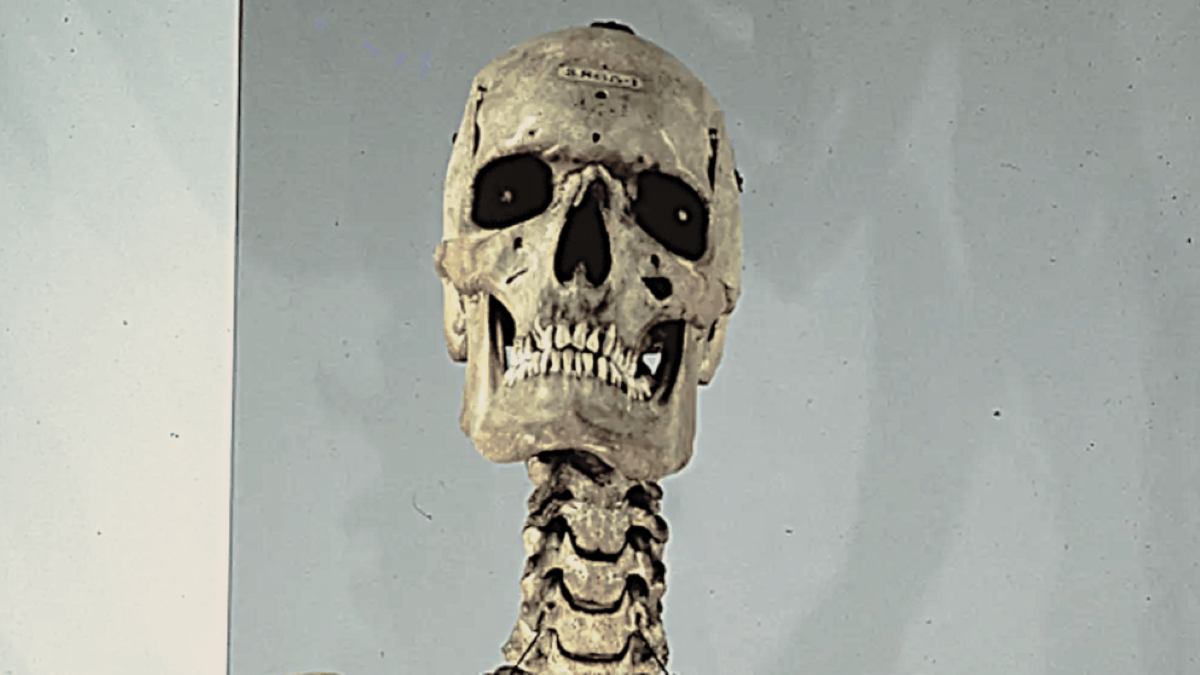Villagers whispered that he’d been conceived atop a haystack, onlookers dubbed him the “living Colossus,” and he astonished night watchmen by regularly lighting his pipe from the top of streetlamps. Yup, at 7 ft, 7 in, Charles Byrne was a big lad.
Born in 1761 in an Irish hamlet, Byrne only lived for around 20 years, but his legacy lives on 241 years after his untimely death. In fact, the centuries-long saga of the “Irish Giant” may still have another twist in the tale ahead of us.
“The most extraordinary curiosity ever known”

Byrne’s stature is the equal of all-time tallest basketball players Gheorge Muresan and Manute Bol, so he’d be considered a giant even today. But in the late 18th century, nutrition, diet, and overall health were poorly understood and the average height of a British man was just 5ft, 6 in, making him seem so much taller in his day.
Byrne was all too aware of his uniqueness and decided to cash in. He left his village in his late teens and was soon dazzling onlookers in Edinburgh. As he traveled down through England towards London, that fame snowballed. By the time he reached the capital in 1782, he was a sensation, with a newspaper report stating:
“However striking a curiosity may be, there is generally some difficulty in engaging the attention of the public; but even this was not the case with the modern living Colossus, or wonderful Irish Giant.”
Byrne didn’t just have height on his side, he had charisma. He became renowned for his gentle, kind, and patient personality, with the Morning Herald proclaiming him to be “the finest display of Human nature they ever saw.” As a measure of how quickly his celebrity grew, soon after he’d arrived in London, he inspired a blockbuster stage show titled Harlequin Teague, or, The Giant’s Causeway, and was mentioned in Charles Dickens’ David Copperfield.
Tragedy strikes!

Sadly for Byrne, the height with which he made his name was the result of the then-unknown condition acromegaly, the same condition suffered by iconic wrestler and actor Andre the Giant. With no understanding of the condition, it went untreated and his health began to decline after he turned 22.
Things only got worse when Byrne was drinking in a pub with his life savings of £700 in his pocket. A pickpocket spied opportunity and pounced, leaving the Irish Giant penniless. The loss of his earnings, the stress of his condition, and his overall health took a toll, and he died on Jun. 1, 1783 at the age of just 22. But the story doesn’t stop here.
Byrne was a figure of fascination not by the general public, but the medical establishment who were eager to study him. His most prominent “admirer” was famed surgeon and anatomist John Hunter, renowned for his collection of strange and unusual specimens. Hunter had eyes for Byrne, seeing his skeleton as a potential centerpiece of his collection and offered to pay him in advance for his corpse.
Byrne angrily declined, not wanting to spent eternity in a glass case being gawped at, though feared the sneaky Hunter and his cronies would ignore his wishes. As such, he made a pact with his close friends that upon his death, they’d seal his body in a lead coffin, spirit it to the coastal town of Margate, and then bury him at sea.
Hunter had other plans. He intercepted the coffin en route to Margate, bribed Byrne’s friends, and swiped the body. Once back at his lab, he rapidly skeletonized the corpse, ran wires through Byrne’s massive bones, and put him in pride of place in his gruesome collection. Byrne’s dying nightmare had come to pass.
Two hundred years of being stared at by tourists

Long after Hunter’s death, London’s Hunterian Museum endures, and remains open to this day. If you like bits of human floating in formaldehyde, it’s certainly a must-visit, and I visited many times to marvel at Byrne’s massive skeleton. In 1962, Queen Elizabeth II and Prince Phillip toured the collection and paused in front of Byrne’s bones, with the press reporting that the monarch “seems impressed” by him. But, as the years passed and the dark story of his skeleton’s acquisition became better known, visitors began wondering whether this was ethical.
In 2011, an article in the British Medical Journal argued that the scientific potential of Byrne’s skeleton had long been exhausted, and that it’s finally time to respect his final wishes and bury him at sea.
It wasn’t until January 2023 that the museum finally concluded that keeping Byrne’s skeleton on display against his express final wishes was both unethical and, let’s face it, kind of asking to be haunted by a very large ghost.
His bones are now in storage at the Royal College of Surgeons of England, with many pushing for his long-delayed sea burial to come to pass. The Hunterian continues to resist, arguing that he’s “an integral part of the Hunterian Collection and will be available for bona fide research into the conditions of acromegaly and gigantism.” I say it’s finally time to put Byrne to rest and put a full stop on this 260 year saga. Let the man sleep in his watery grave.

